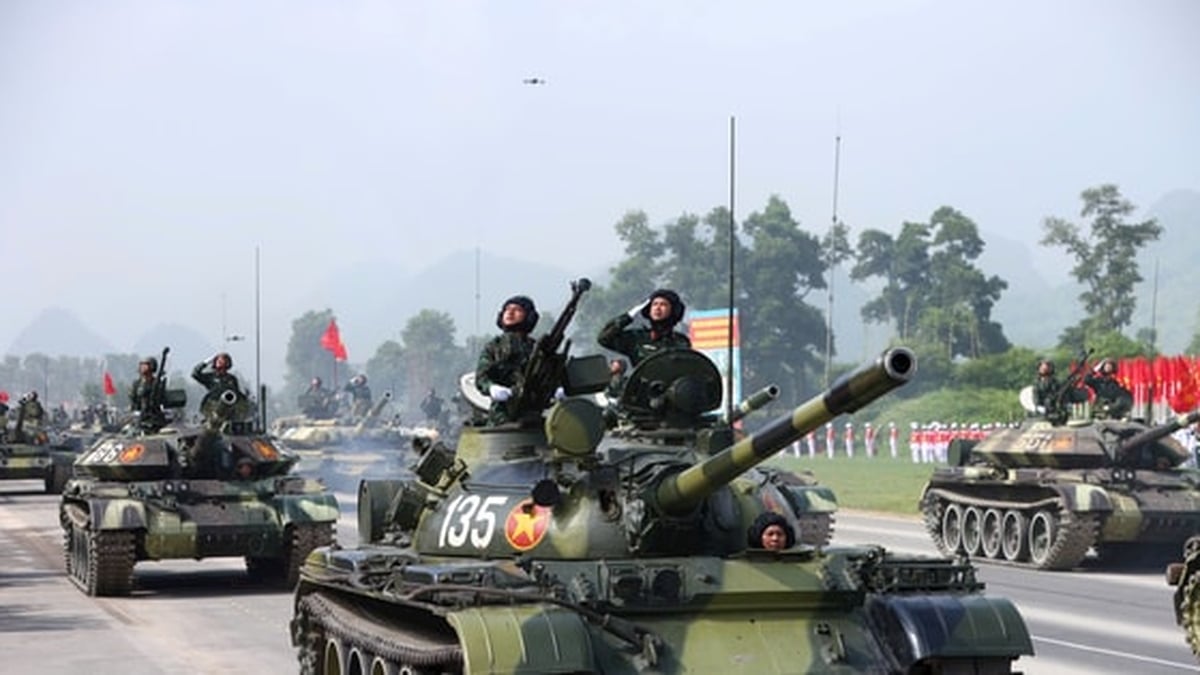
Who has better weapons, Russian or American?
On the Middle East battlefield, the armies of Arab countries and Iran are the ones equipped with many air defense systems made by the Soviet Union and later Russia. However, no Arab country has ever shot down a US-made fighter jet in an air battle, for decades.
Despite being equipped with a complete air defense system like Syria, the Israeli Air Force has still conducted hundreds of airstrikes on President Bashar al-Assad's forces since 2013. By October 2023, a new round of Middle East war had broken out, and the Israeli Air Force had conducted thousands of airstrikes on the Gaza Strip, Lebanon, Syria, Iran and Yemen.
Over more than a decade and thousands of air defense engagements, the air defense forces of Syria, Iran, and other countries have fired at least 1,000 anti-aircraft missiles. It was not until January 10, 2018, that a Syrian anti-aircraft missile shot down an Israeli F-16 fighter jet; the reason was later revealed to be that the pilot “forgot” to turn on the aircraft’s jamming system.
In the Middle East, F-16 fighters faced S-300, Buk, Tor, SAM, Bavar 373, Azaraksh, AD-08 Glory and other air defense missiles of Iran, Syria and Houthi in Yemen; and only shot down one fighter; almost kept the complete victory.

This reality only changed when the Ukraine conflict took place, Russia gave the world a classic example of how to shoot down an American F-16 fighter jet. The first step is to solve the problem of early detection and early target lock.
At around 11:20 a.m. on April 11, a group of Russian MiG-31 fighter jets were on patrol near Kursk (Russia) and Sumy Oblast (Ukraine) when they turned on their radar systems to conduct an aerial search. In addition to serving as a large interceptor and a launcher for the Dagger hypersonic missile, the MiG-31 can also be used as a small early warning aircraft, thanks to its powerful radar.
The MiG-31's Zaslon S-800 radar can detect targets the size of fighter jets at a distance of up to 200 km and can track up to 10 of them. With just three MiG-31BM fighters patrolling the area, an airborne early warning radar system with virtually no blind spots can be formed.
Recently, fierce fighting has been continuing between Russia and Ukraine on the border of Sumy and Kursk provinces. Ukrainian fighter jets have carried out airstrikes, dropping US-made JADM satellite-guided bombs to attack Russian ground positions.
MiG-31 fighters were deployed here, on patrol, with the aim of detecting Ukrainian fighter jets. This time, the MiG-31 really seized the opportunity.
The Ukrainian MiG-29 fighter jets appeared first and began dropping US-made SBD precision-guided bombs on Russian positions. The patrolling MiG-31 pilot soon discovered that in the airspace near the MiG-29 that dropped the bombs, there was an F-16A on an air cover mission.

Because the F-16A was performing low-altitude flight tactics to avoid being detected by Russian air defense radars, due to the curvature of the earth, the 96L6 reconnaissance radar of the S-400 air defense missile system had little chance of detecting the Ukrainian F-16A fighter jet flying very low at the moment.
Unless the 96L6 radar is positioned on superior elevations, it is unlikely to be able to detect low-flying targets. In the Middle East, the Ukrainian F-16s could complete their mission and return home victorious. However, this time, the F-16A encountered the elite of the Russian Aerospace Forces.
Russia shot down F-16 with three missiles
After spotting the Ukrainian MiG-29 and F-16A, the Russian MiG-31 did not directly attack the F-16. First, the distance was too great and there was no guarantee that it could shoot down the F-16 with the R-37 long-range air-to-air missiles it carried on its wings.
Second, to approach and lock on the target, the fire control radar must be turned on, which may be detected by the F-16 pilot. Or to approach closely to attack, there is a possibility that the MiG-31 will directly enter the interception zone of the Ukrainian air defense missile; it is possible that the MiG-31 will be destroyed by the Ukrainian Patriot air defense missile.

The MiG-31 now uses a data link system to transmit target information directly to the S-400 air defense missile sites. This means that the MiG-31 is responsible for detecting, locking on to the target, and transmitting data. The Russian air defense missile sites do not need to turn on their radar to lock on to the target, but can launch a surprise missile attack.
Three anti-aircraft missiles from the Russian S-400 air defense system simultaneously attacked the Ukrainian F-16. At this time, the MiG-31 began to provide mid-course or final guidance to the S-400 air defense missile. At the final stage, the air defense missile suddenly turned on its active radar to conduct search, location, and carry out the final attack.
The ill-fated Ukrainian F-16A may have been unaware of the entire process of the Russian attack, only when the radar alarm sounded violently in the cockpit of the F-16, at which point three 48N6DM missiles, launched by the S-400 air defense missile system, approached the target.
The 48N6DM missile can intercept targets at speeds 14 times the speed of sound, with an overload of up to 20G; while the F-16A fighter jet, which only has a speed of 1 times the speed of sound and an overload of only 9G. When the alarm of approaching enemy missiles sounded, the Ukrainian pilots had no time to react.

The MiG-31 pilot Voyevoda reported that three anti-aircraft missiles were fired at the F-16. Ukraine declared the pilot of the F-16A fighter, Pavlo Ivanov, 26, dead and was later awarded the title of Hero of Ukraine by President Zelensky.
Pilot Pavlo Ivanov, after graduating from the Kiev Aviation School, flew Su-25 attack aircraft for a while. After the summer of 2023, he went to Europe for a year-long training to switch to flying F-16 fighters.
This air defense battle of the Russian army once again demonstrated the power of systematic warfare. Russian weapons are not good at fighting individually, but are very strong in a large system and conducting joint operations.
Even the much-criticized MiG-29 fighter jet had a very small radar system, was slow, and had a short range. But in the Soviet combat system, there were powerful radar stations everywhere on the ground.

In combat, the MiG-29 does not need to turn on its radar, as the pilot can fly directly under the guidance of the ground control station. When it reaches the missile launch position, it will turn on its fire control radar and launch the missile directly. In this type of attack, the MiG-29 is like a stealth fighter, very simple but effective.
The MiG-29's short range was not a problem since the European front was not large. After all, it was only to protect Russian ground armored vehicles, which had an operational range of up to tens of kilometers.
Source: https://khoahocdoisong.vn/vu-khi-nga-tut-hau-so-voi-my-o-ukraine-post1544312.html







































































































Comment (0)